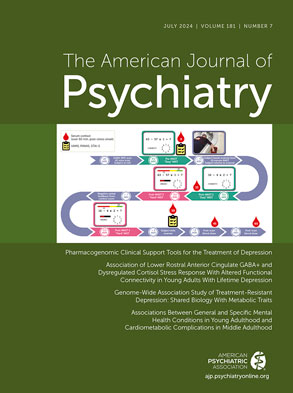To The Editor: We thank Drs. Levine, Morrow, Berdichevsky, and Martin for their letter concerning our article. Their comments are thought provoking, but we must take issue with their interpretation of our data.
As stated in the legend of Figure 2, the traces shown in the figure are as follows: “Part A shows IbTx-sensitive currents in comparison subject and patient cells” (p. 1626). Confusion seems to arise from the following sentence: “original traces of the difference currents before and after application of…IbTx” (p. 1626). This sentence is the explanation of the operation that was performed; it does not indicate that the currents before blockade are on the left side and the currents after blockade are on the right side. If this were the case, the sentence that follows, which contains the locations of the subject and patient cells in the figure, would have no meaning: “subject cells (left) and patient cells (right)” (p. 1626).
In electrophysiology, it is the norm to show the current that is sensitive to a blocker when a selective blocker is used and it is desired to perform the experiments in rather physiological conditions, which means that there are many currents recorded simultaneously. Thus, we want to reassure Dr. Levine et al. that the graph in our figure illustrates what is indicated in the text, e.g. the BK channel (BK Ca ) activity was twice as large in the comparison cells than in the patient cells.
Dr. Levine et al. have asked us to explain our hypothesis that BK
Ca deficiency in our patient led to a decreased neuronal activity. They also indicate that a gain-of-function mutation in KCNMA1 and an increase in neuronal excitability have been previously associated with generalized epilepsy
(1), a condition that is also present in 25% of autistic individuals. It is, however, important to consider that mental retardation is much more frequent in autistic disorder (at least 70% of patients) than in epilepsy.
To support our hypothesis that BK Ca deficiency associated with autism and mental retardation may lead to a decreased neuronal activity, we would like to highlight the following three points:
1) The patient carrying the chromosomal translocation does not have epilepsy, and an analysis of the knockout mouse model for BK
Ca showed a similar result
(2) .
2) Reciprocally, in the family with the gain-of-function mutation, none of the patients studied have either autism or mental retardation. Furthermore, Du et al. reported that the phenotype of epileptic patients seems to be very different from that reported for knockout mice
(1) . One major reason for this difference, as suggested by Du et al., may be that the missense mutation associated with epilepsy is a gain-of-function mutation, whereas the mice lack BK
Ca channels, i.e., loss-of-function mutation.
3) In their analysis of the BK Ca /mouse model, Sausbier et al. did not report any increased neuronal excitability (2). Instead, they observed a suppression of Purkinje cell activity and synapses.
In summary, we maintain that we found a decreased BK Ca activity in the patient’s cells, which was caused by the gene haploinsufficiency. Furthermore, we propose (as a discussion element) that the decreased BK Ca activity that is associated with autism and mental retardation likely leads to a decreased neuronal activity. With the report that an increased BK Ca activity associated with generalized epilepsy causes a higher neuronal activity, we feel that this data may provide the first phenotype/genotype correlations for KCNMA1 mutations.

